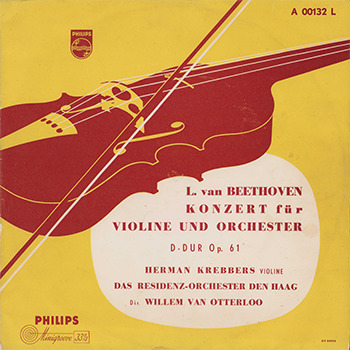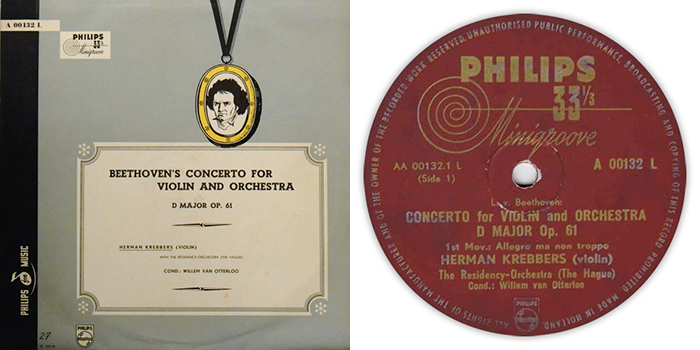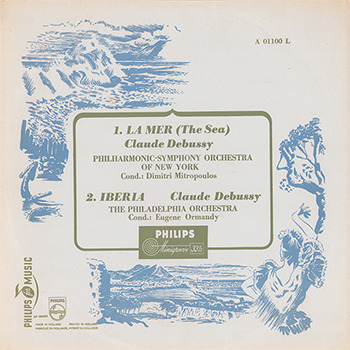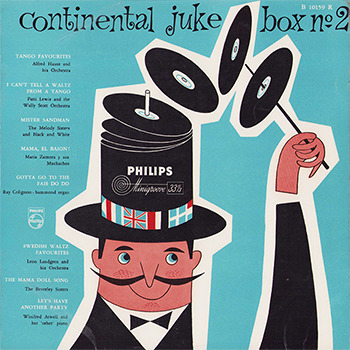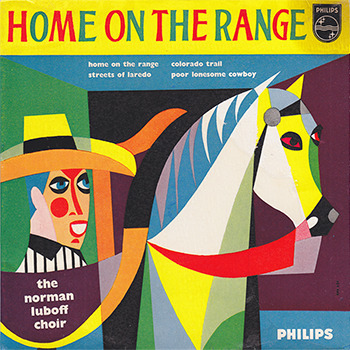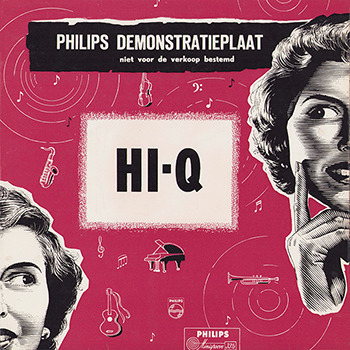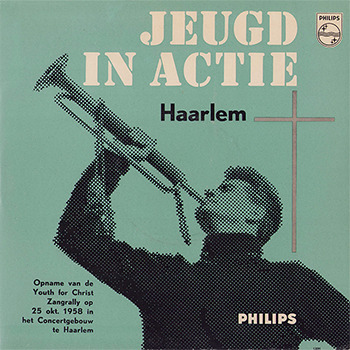There are many online sources for back issues of newspapers, magazines, etc. and when these sources use a search option, interesting facts about whatever subject can be found in these archives. I used the Delpher website which appeared to be very helpful in finding details about the early years of the Philips (Minigroove) label. This post links to several articles I found and I added notes to them (the articles are in Dutch, but my notes will explain the more essential details for international readers).
Surprisingly, all articles I found, dealing with Philips’ new approach of the record industry, are from September – November 1951. Apparently this was the time that Philips brought their new plans to the attention of the media, which concurred with the introduction of the 7inch 78rpm record, a novelty to the record world.
Link 1: De Tijd – September 22, 1951
Some interesting facts here. The article tells us that Philips will start their new laboratory in September 1951. A new factory being ready in early 1952. It mentions a list of records being produced already, which means that the new records were being made even before the laboratory and factory were (officially) started. The article mentions the upcoming new 7inch 78rpm singles and albums in the 12inch format (not new in the market, but new for Philips). All records will be made with the “long play technique”, known as “Minigroove”.
Link 2: Het Parool – September 22, 1951This article has more or less the same contents as the previous one. It also tells us that the new records will eventually be made by the new factory in Baarn, and until then the factory in Doetinchem will remain active. Apparently Philips introduced their new 7inch 78rpm record in attendance of government officials, business people and artists, looking back on passed achievements and paying attention to their future plans and goals.
Link 3: Algemeen Dagblad – September 22, 1951
Another article from the same day in 1951, showing the same information again, but now with the mention of upcoming long play records with durations of 15 and 22 minutes (the 10inch and 12inch albums respectively).
Link 4: Leeuwarder Courant – September 22, 1951
This article, again from September 22, announces that ‘next week’ the Dutch public will be introduced to the “Philipsgramofoonplaat’, meaning the 7inch and album formats. This is a concrete indication for the first releases on Philips Minigroove.
Link 5: De Waarheid – October 10, 1951
“De Waarheid” compares the new records (the long play records) with the old 78rpm records and concludes that the sound quality of the old 78rpm records surpasses the quality of the long play records. What makes this article especially interesting is the mention of an Philips LP: The Fourth Symphony of Tsjaikowsky, by the Residency Orchestra, led by Willem van Otterloo. This is Philips LP A 00110 L.
Link 6: Het Vaderland – November 2, 1951
Philips LP A 00110 L (see previous article) is said to be the first Philips long play record in this article. This appears to be correct though it’s a bit odd as there are several albums with earlier numbers.
Link 7: Nieuwe Courant – November 14, 1951
This article mentions a concert where long play records (with a duration of 45 minutes and to be played at 33 1/3 rpm) will be available. Assuming these were Philips Minigroove albums, there were several titles available on Nov. 14.
Link 8: De Tijd – November 20, 1951
This article mentions the production of 10 and 12inch albums, apart from the 7inch 78rpm record. LP 00100 (12inch LP) is mentioned again, and now a specific 10inch album is mentioned as well: Mozart’s Haffner Symphony by the Berliner Philharmonic Orchestra, led by Lehmann. This is Philips A 00111 R.
